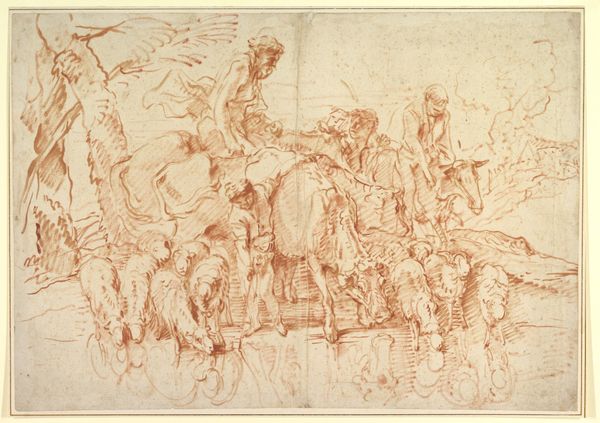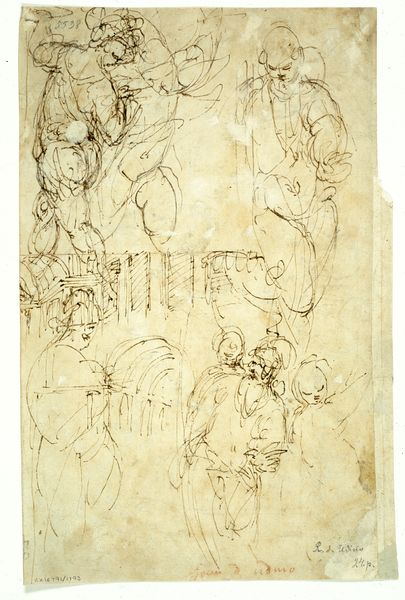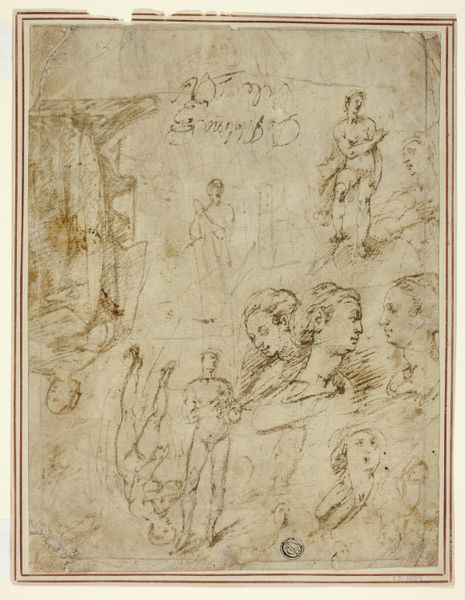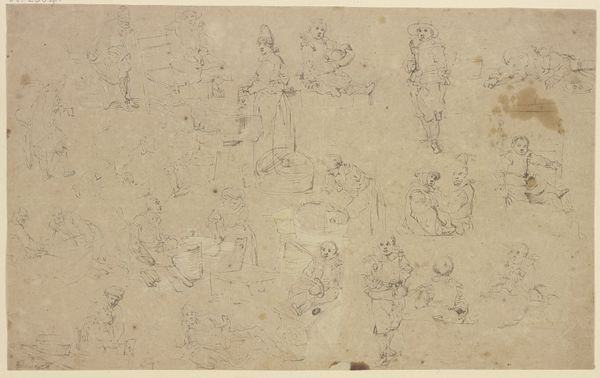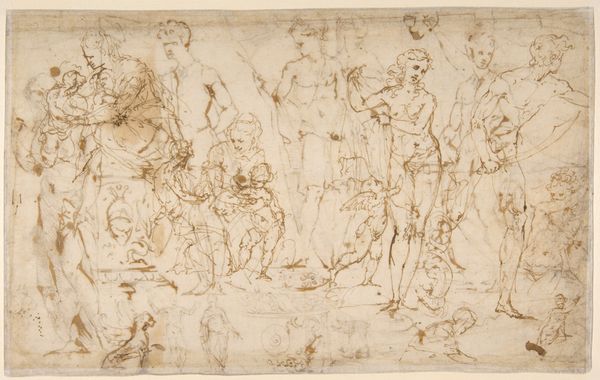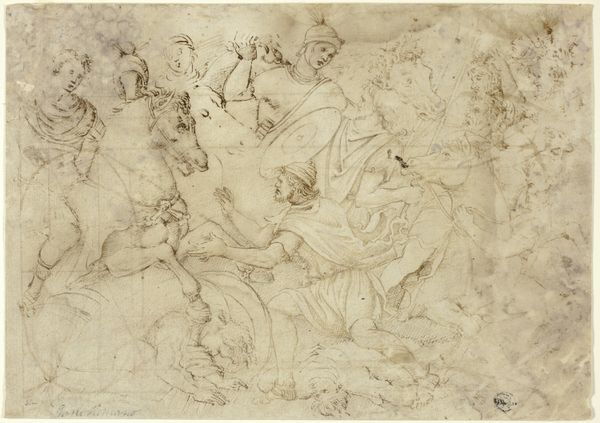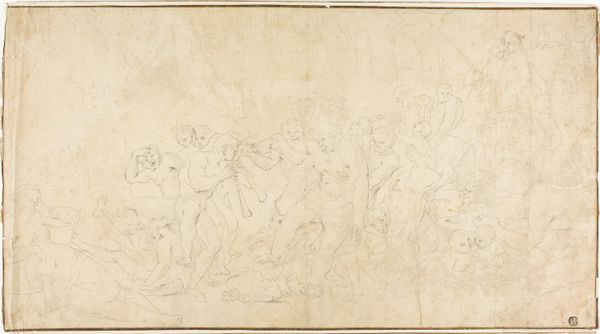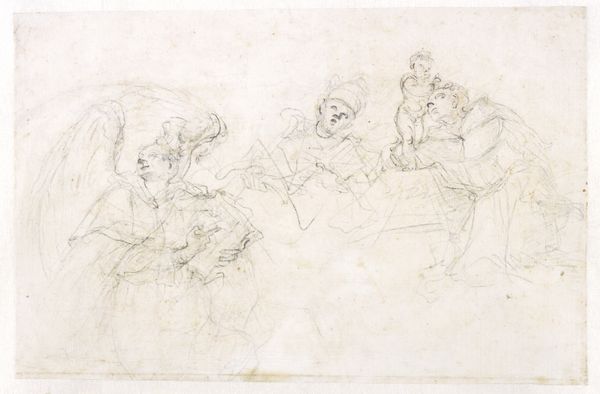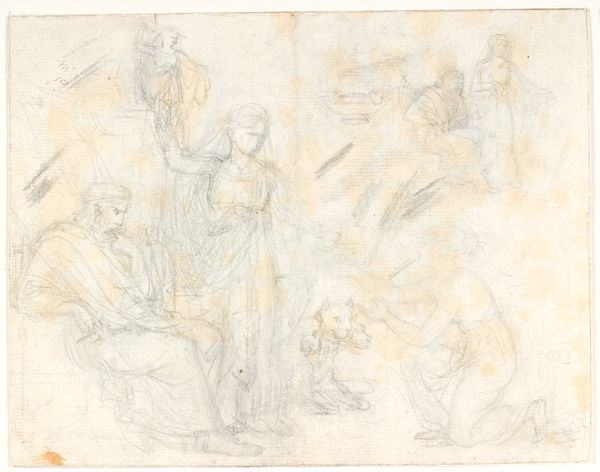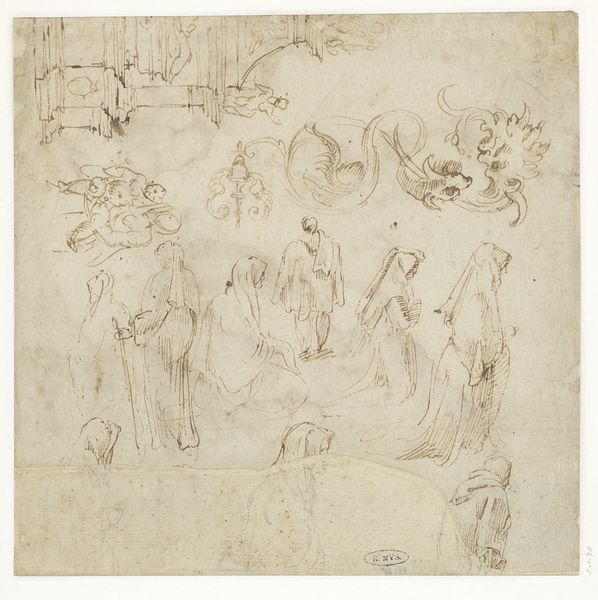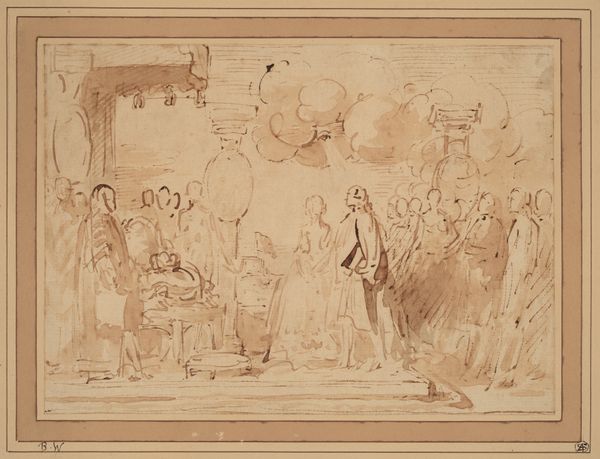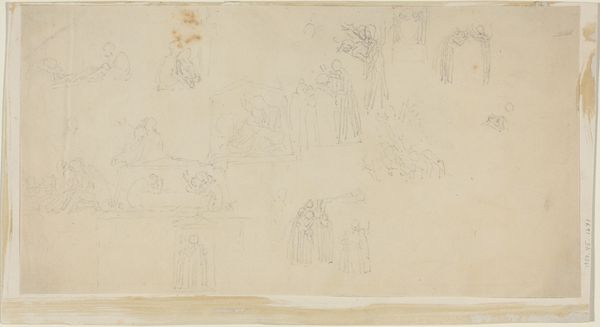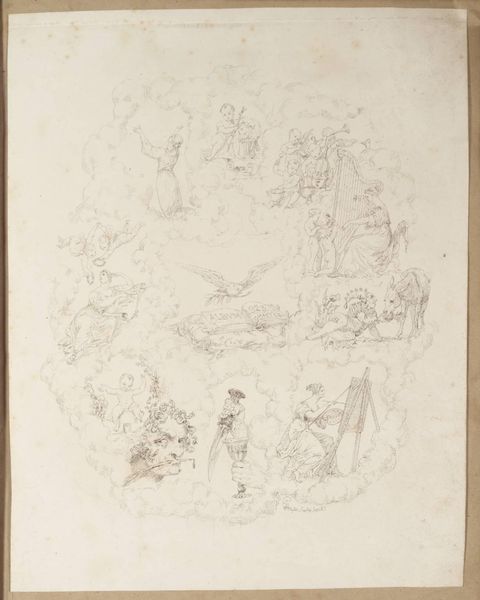
Studies on a great "picture of the Virgin" Madonna with child, ten saints and angels 1521
0:00
0:00
albrechtdurer
Musée Bonnat, Bayonne, France
drawing, paper, pencil
#
drawing
#
pencil sketch
#
etching
#
figuration
#
paper
#
text
#
11_renaissance
#
child
#
sketch
#
group-portraits
#
pencil
#
line
#
northern-renaissance
#
watercolor
Copyright: Public domain
Editor: Today, we’re looking at Albrecht Durer’s "Studies on a great 'picture of the Virgin' Madonna with child, ten saints and angels," a pencil drawing on paper from 1521. The delicacy of the lines almost makes it feel ephemeral. It seems very much a work in progress. What do you make of it? Curator: Well, given the time, context is essential. The early 16th century witnessed increasing tensions with the Church, leading to the Reformation. Durer, while remaining within the established artistic conventions of religious iconography, was deeply affected by these social upheavals. The sketch format reveals not just artistic preparation, but perhaps also a certain ambivalence. How might a "great picture" function during times of great religious and social upheaval? Editor: That's a fascinating point! So, the sketch-like nature could be a reflection of a changing world? It's interesting to see Durer wrestling with how to visually represent religious figures during such a tumultuous time. Were artistic commissions changing then? Curator: Precisely. The patronage system was undergoing shifts. The emerging merchant class began to influence artistic production. Durer, having embraced printmaking, was ahead of the curve. The looseness could reflect Durer’s awareness of his viewership outside the confines of the church, speaking more towards the individual believer. Are you noticing any element of class commentary as well? Editor: I do notice a really diverse cast of figures depicted in this composition that reflects a wide class of people and possibly opinions. Thinking about it as social commentary adds another fascinating layer! Curator: It pushes us to see beyond mere religious depiction and view art as active engagement with social reality. Editor: Absolutely. It really puts the work and Durer in a different light for me. I hadn’t thought of religious art of the time as such a reflection of social tensions.
Comments
No comments
Be the first to comment and join the conversation on the ultimate creative platform.
